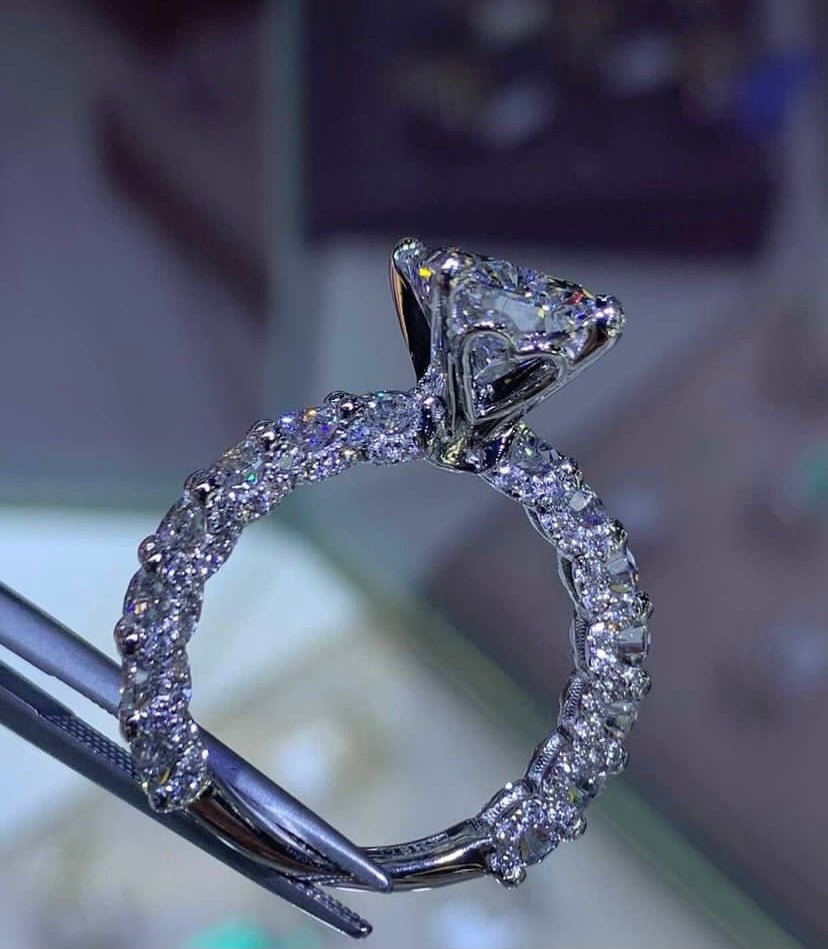
The engagement ring, a symbol of love and commitment, has evolved significantly over the centuries. Traditionally, this precious piece of jewelry has been hand-selected by couples or individuals in person, with careful consideration of the gemstone, band material, and setting. However, as technology continues to revolutionize various industries, even the process of selecting an engagement ring has not been left untouched. One of the most exciting developments in this arena is the growing intersection of engagement rings and virtual reality (VR), marking a 21st-century trend that is transforming how couples shop for this timeless symbol of love.
Virtual reality technology allows users to immerse themselves in a simulated environment, experiencing and interacting with digital content in a way that feels incredibly real. Over the past few years, VR has been integrated into various fields, including gaming, education, real estate, and healthcare. Now, it’s making waves in the jewelry industry, particularly in the engagement ring market, by providing an innovative and immersive way for couples to design and select their rings.
Shopping for an engagement ring is often considered a deeply personal and significant experience, and VR is enhancing this by creating a digital environment that mimics the physical jewelry store experience. Couples can now step into a virtual showroom from the comfort of their homes, browsing through a vast array of ring styles, stones, and settings. With the help of VR headsets and applications, customers can examine the intricate details of each engagement ring, rotate it, and even visualize it on their finger with impressive accuracy. This technology is especially valuable for those who may be unable to visit stores in person, whether due to distance, health concerns, or simply for convenience.
In addition to providing a more flexible and accessible shopping experience, virtual reality offers a unique opportunity for customization. In the past, designing a custom engagement ring could be a lengthy and challenging process, requiring multiple visits to a jeweler and relying on sketches or CAD (computer-aided design) renderings. Now, with VR, users can take a hands-on approach to the design process. They can select their ideal stone, setting, and band, and instantly see how these elements come together in a three-dimensional, interactive model. This empowers customers to be more involved in the creative process, ensuring that the final product aligns with their vision and preferences.
Moreover, VR has introduced a level of personalization that was once difficult to achieve in traditional shopping settings. For instance, some platforms allow users to create fully customized rings from scratch, adjusting every minute detail in real-time. This can range from the specific cut and color of the stone to the engraving on the band. Such advancements not only make the shopping experience more engaging and tailored but also allow couples to create a one-of-a-kind symbol of their relationship.
The use of virtual reality in the engagement ring industry also aligns with the growing demand for ethical and sustainable shopping options. Many consumers are becoming more conscious of where their diamonds and gemstones are sourced from and how they are produced. VR can facilitate this shift by allowing customers to visualize lab-grown diamonds or other eco-friendly materials, giving them a clear idea of how these stones compare to their traditional counterparts.
While virtual reality is still a relatively new trend in the engagement ring market, its potential is undeniable. Jewelers who embrace this technology are not only meeting the evolving needs of today’s digital-savvy consumers but are also redefining the jewelry shopping experience. As VR continues to advance, we can expect even more innovative features to enhance the process, such as augmented reality (AR) integration, which could allow users to view rings on their hands without the need for specialized equipment.
In conclusion, the merging of engagement rings and virtual reality represents an exciting trend in the 21st century, one that is reshaping how couples approach this important milestone. By making the shopping experience more accessible, customizable, and immersive, VR is empowering individuals to create engagement rings that are as unique as their love stories. As technology continues to evolve, it’s likely that VR will play an even greater role in the jewelry industry, offering new ways for couples to connect with the symbols that represent their everlasting commitment.
